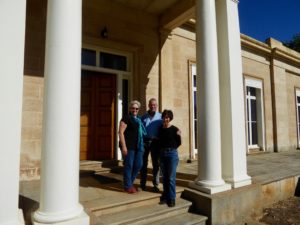Knowing we were planning to divert to the Elephant Pass Pancake Parlor for one of their famous pancakes we had a light breakfast and a short walk before setting out for Launceston.
We had called in at the pancake parlor when we travelled Tasmania in our campervan in 1989 and Ben and I had been back in 1997. It hadn’t changed at all – the pancakes were still delicious!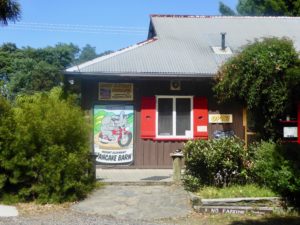 We both had a Banaberry Pancake which was a light crepe crammed full of bananas, strawberries, raspberries and blackberries. Very healthy (except for the maple syrup) and very satisfying! The café is a lot of fun
We both had a Banaberry Pancake which was a light crepe crammed full of bananas, strawberries, raspberries and blackberries. Very healthy (except for the maple syrup) and very satisfying! The café is a lot of fun 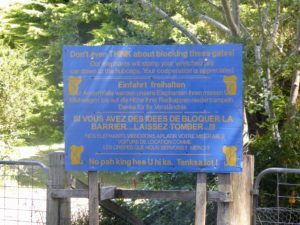 is decorated with elephants of every description including two wonderful elephant carved chairs.
is decorated with elephants of every description including two wonderful elephant carved chairs.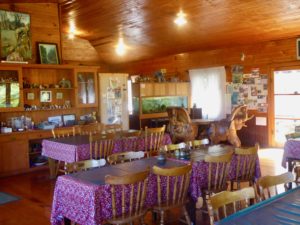
The drive to Launceston was lovely. We followed the Esk River Valley for most of the way and then the main inland highway. A quick stop at Dan Murphy’s for some tonic and BCF for another bag (we had been acquiring a lot of extras) and then down to Clarendon, a National Trust home with a long and interesting history.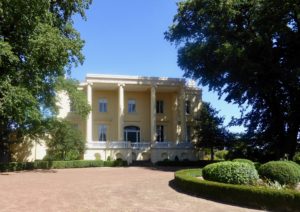 Clarendon is set in 7 hectares of parklands on the banks of the South Esk River and is a magnificent three-story Georgian house with servants’ quarters, a heritage walled garden,
Clarendon is set in 7 hectares of parklands on the banks of the South Esk River and is a magnificent three-story Georgian house with servants’ quarters, a heritage walled garden,
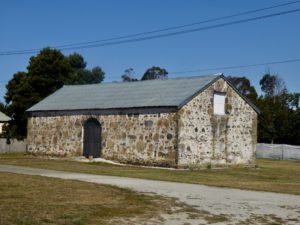
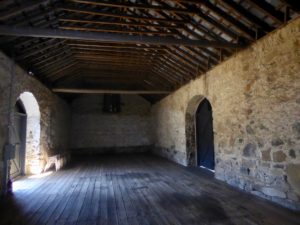 The avenue of 150 year old elms is the largest in the Southern Hemisphere and has been unaffected by the Dutch Elm disease which has devastated the European tree.
The avenue of 150 year old elms is the largest in the Southern Hemisphere and has been unaffected by the Dutch Elm disease which has devastated the European tree.
Clarendon was built in 1838 as an extraordinary statement of achievement for wealthy woolgrower and merchant, James Cox. Although built with convict labor, Cox was known to treat his convicts well and later played a major role in the abolishment of convict labor and the end of transportation.
After the death of James Cox and his wife the property passed on to his grandson who obviously lacked the flair of his grandfather. The property fell into disrepair and it was only the dedication of a few local business people that saved it convincing the National Trust to intervene in 1962. It took 10 years to renovate and opened it’s doors to the general public in 1972. We were shown round by a dedicated band of volunteers and encouraged to sit on the seats, try the beds and who were disappointed that neither of us could play any of the pianos!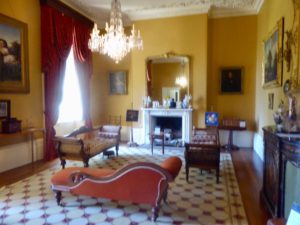

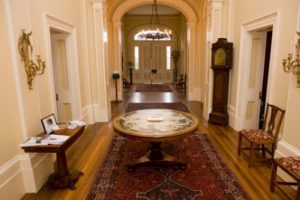
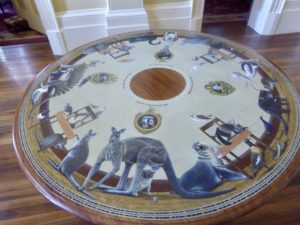
By this time it was late afternoon and time for us to arrive at Panshanger. We made a couple of attempts. The first time we had the destination as Panshanger B&B and the GPS took us to the back of the property and left us in the middle of a paddock. When we told George he laughed and said that this happened a lot!
Our second attempt was more successful and after circling the property we arrived at the front door and got a warm welcome from Maree. We settled down for a cup of tea and to await George, who despite his broken leg, was flying in from Melbourne in his plane.
Panshanger was built by Joseph Archer who arrived in Van Diemen’s Land in 1821 and built a ‘small but handsome cottage’ on Lake River in the Longford area. As his wealth grew, he expanded his land holdings and added to his house, creating a home that is known today as one of the finest colonial examples of Greek Revival architecture in Australia. The original cottage forms part of the enclosed courtyard.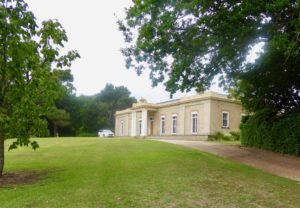
After two generations of Archers the property was sold in 1908 to Thomas Mills, a gold miner and engineer in Charters Towers. It was purchased as a wedding gift for his son, Charles, when he married Maude White of ‘Bluff Downs’ (Edgar’s great aunt). The Mills family still runs the property with George and Maree at the helm.
George eventually arrived home and we settled in for a convivial evening with them and their son, Thomas, who is living at home whilst he builds a plane. His other son, Nick, helps his father run the property and daughter, Pip, is a vet and lives in Western Australia. Tom and Nick still remember the Bassingthwaighte boys visit in 1989!
The next day George had a date with his physiotherapist, so Maree took us on a tour of the grounds and gardens. The acres of parks and gardens feature stable yards, a water tower, horse-operated pump house, remains of a cider press and a gardener’s cottage so there was plenty to see.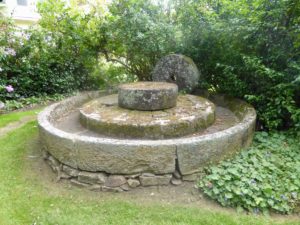
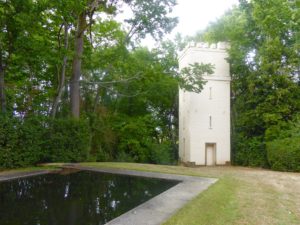
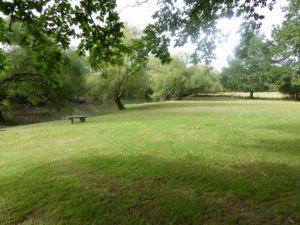
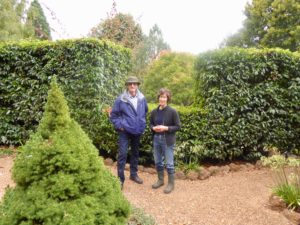 – though her self confessed preference is for trees and the vegetable gardens, of which there are two.
– though her self confessed preference is for trees and the vegetable gardens, of which there are two.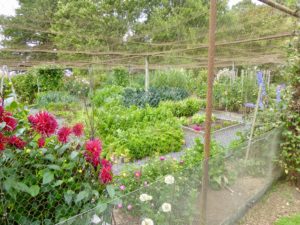 Despite this preference there are plenty of beds of roses, perennials and flowering shrubs.
Despite this preference there are plenty of beds of roses, perennials and flowering shrubs.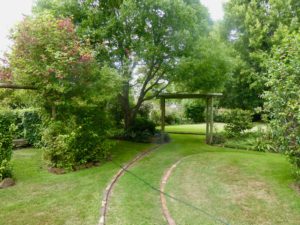 Two orchards keep the family (and the Church) supplied with fruit for eating and preserving. Hawthorn hedges, oaks, elms, laurels, lindens, maritime pines and sweeping lawns all create a magnificent setting for the house.
Two orchards keep the family (and the Church) supplied with fruit for eating and preserving. Hawthorn hedges, oaks, elms, laurels, lindens, maritime pines and sweeping lawns all create a magnificent setting for the house.
During our tour we visited Longdown, the former home of Ernest and Dinie Mills, which now forms part of Panshanger. It is currently being renovated in anticipation of George and Marie moving in when it is completed. Nick and his wife Stacey and family will then take over the homestead. Next to Longford are the ‘International’ and ‘Domestic’ terminals of Panshanger. The International Terminal houses George’s beloved Piper Comanche 400 and the Domestic Terminal houses the Rans V 7 that Tom is building.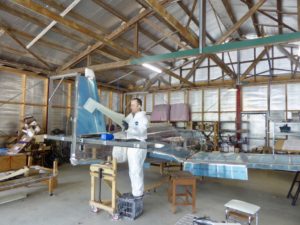
That afternoon we went for a drive to visit the Fitzpatrick Inn where Edgar and his family stayed in 1956. 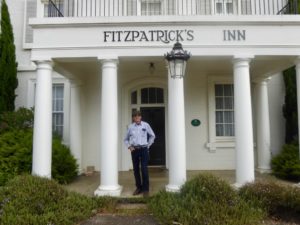 It is one of the oldest hotels in Tasmania and used to be run by three formidable sisters.
It is one of the oldest hotels in Tasmania and used to be run by three formidable sisters. 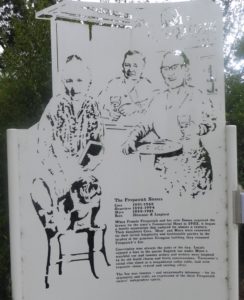 Edgar quite clearly remembers it from age 8. It is still running much as it did back then but now run by a very friendly lady who happily showed us around. That night George’s brother John and his sister, Diane, came to dinner, which we ate in the formal dining room in grand style.
Edgar quite clearly remembers it from age 8. It is still running much as it did back then but now run by a very friendly lady who happily showed us around. That night George’s brother John and his sister, Diane, came to dinner, which we ate in the formal dining room in grand style.
The next day George and Edgar went out to look over the cattle and inspect George’s crops. George has always been an innovative farmer and his crops include, hemp for hemp oil and opium poppies for medical opium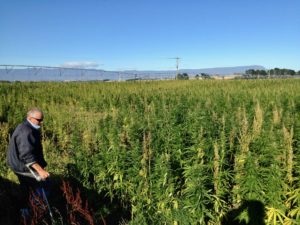 . We farewelled them both at around 10am and headed north for our Brunch booking at the Tasmanian Food and Wine Conservatory.
. We farewelled them both at around 10am and headed north for our Brunch booking at the Tasmanian Food and Wine Conservatory.